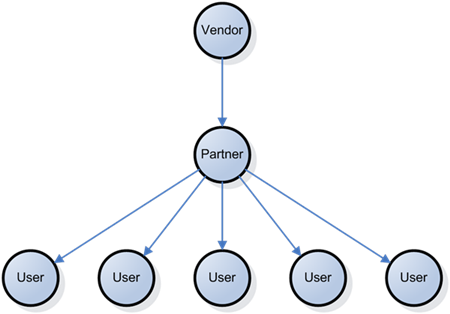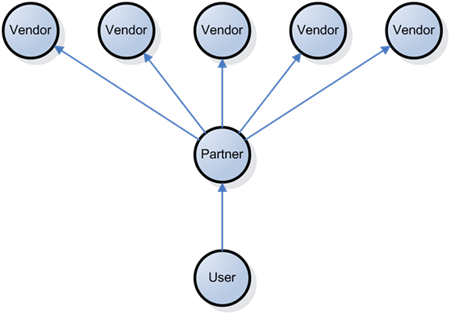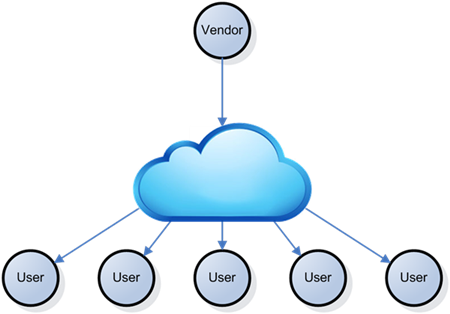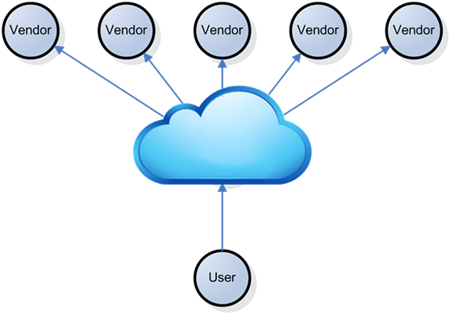There is no doubt that customers are starting to examine how they procure technology, and opting for a Cloud model rather than the traditional CapEx model. However, while this shift may provide a range of benefits for the customer and potentially the channel, it also brings with it some fundamental changes to the way technology is purchased, deployed and consumed.
In particular, when vendors provide their products as a service (which does not require ancillary products or services that were once the domain of the traditional partner) it raises the question of whether the channel still has a role to play in this new world. In fact some vendors have even gone so far as to say that partners are becoming less relevant, and distribution will be dead in a few years. But is this true? In order to explore this further we need to ask the question ‘why does the channel even exist’?
The Traditional Model
Ask most vendors why they have a channel and they will usually provide reasons like reach, coverage, access to new customers, etc. In effect they view the role of the channel as an extension of their sales force.

Interestingly, when partners are asked this question many of them also provide a similar answer.
But this is a vendor-centric view of the world.
When we look at the role of the channel from a customer’s perspective, we almost need to turn this diagram upside down.

In other words, users perceive the channel as their conduit to multiple products and services from multiple vendors to create a solution. In effect they view the role of the channel as an extension of their IT Department.
In The Cloud
However, there is an increasing sentiment from some vendors that when their products move into the cloud, the role of the channel becomes less relevant. For example, by providing their product as a service (thereby negating the need for additional software, hardware, and services), and adding a user interface that manages billing and provisioning, the role of the channel is greatly diminished. In fact, this is becoming very prevalent in the consumer space around single function apps.
The problem is that from a vendor’s perspective it turns the
first diagram into something that looks like this:

This model raises the question ‘with the cloud as your “channel” (or more accurately, your Go-To-Market strategy) do you still need traditional partners’?
The problem is when you look at it from a customer’s perspective. If we replace the channel with a cloud, as in the diagram below, the customer experience may not always be ideal.

The issue for customers (especially in that enormous gap between Consumer and Enterprise) is that they need more than single function consumer apps, and they don’t have the internal resources that Enterprise has to evaluate and build the best solution themselves.
And while the pure cloud vendors will say they have a “complete solution” they are only talking about their piece of the puzzle. For example, a cloud CRM vendor won’t sort out a problem with (say) the cloud Salesforce Automation vendor’s product. The cloud Email Archiving solution may use a completely different architecture to the rest of the cloud Backup and recovery strategy. In fact, for a lot of customers, getting technical assistance with a cloud product can be a problem because they often don’t even know where to start or their only means of communications is a faceless chat box.
So, until every vendor can solve every problem for every customer, the channel is unlikely to disappear. Yes the role of the channel will change. Maybe instead of Systems Integrators, we’ll see Cloud Integrators or Cloud Brokers. Maybe instead of profit models being based on big lumpy one-off payments, businesses will adapt to smaller monthly recurring revenue streams. But the channel exists to fill the gap between the vendor’s product and the customer’s expectations, and I think we will need companies to do that for a long time to come.
The Role Of Distribution
This comparison can also be extended to the role of distributors. Much like the way partners fill a gap, the role of distribution has always been to fill the gap between the Vendor’s capabilities, and the Partner’s requirements. With that said, this gap has changed dramatically over the years. Distributors have always added value, but the definition of value has changed over time. At different times, and for different partners, value may have come in the form of delivery of products, or financing and credit, or product knowledge, licensing expertise, or convenience of pick up. The fundamental objective of distribution however is to satisfy a requirement that a partner needs in a way that is cheaper, quicker or better than the vendor.
Viewed in this context, we can see there are a myriad of functions that don’t strictly belong in the vendor’s responsibility but still need to be delivered. I’ve listed a few below, but no doubt many more will appear as more end users acquire services rather than products. The question is who will deliver these: the partner, the distributor or the vendor?
• Providing 3rd party products for a Cloud environment (e.g. handsets for a VoIP solution)
• License aggregation and better pricing
• End-user demand generation (particularly for vendors with low brand recognition)
• Solution advice and recommendations
• Integrating/brokering multiple Cloud services
• Driving usage after the sale (especially in a Consumption model)
• Help Desk and support
The answer is of course whichever tier of the channel can deliver it cheaper, quicker or better than the other two tiers.
Summary
In conclusion, it all comes down to how you define the channel’s role. If partners and distributors simply think of themselves as selling products that they purchased from their supplier, then I would contend that this business model is in decline both from a volume and a profit perspective.
If however they see themselves as filling the gap between what the vendor makes and what the customer wants, then there will always be a role for the channel. No one vendor can do everything, and the more complex the customer’s requirements, the bigger that gap is.


